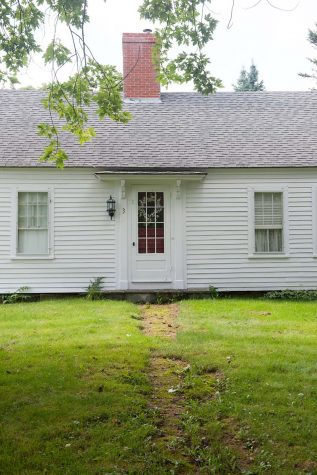A Tribe of Versatile Yankees
The uncommon community of beautiful Blue Hill, Maine
In 1794 a Harvard divinity student made his way to a fledgling town called Blue Hill to become the first settled Congregationalist minister stationed east of Penobscot Bay. Jonathan Fisher, the son of a fallen Revolutionary War soldier, had too many talents for his own good. As a boy he wanted to be a blacksmith, a cabinetmaker, a clockmaker. As a minister he made engravings and watercolor paintings of the landscapes and wildlife he saw around him, dabbled in mathematics, farmed, wrote poetry, designed furniture, created a camera obscura, and eventually, built his home on Mines Road.
Today the house has been turned into a museum celebrating the life and times of this most versatile Yankee and, to some degree, the New England ethos he embodied—a culture of independent thinking and creativity that is still alive and well in Blue Hill today.
It seems like no one in Blue Hill does just one thing. This is generally true in Maine, but here it is especially so. It is the kind of place where lawyers teach yoga classes, cashiers write children’s books, and basket weavers make abstract oil paintings while also teaching first grade. It is the kind of place where people drive their Subarus into the ground and chop their own wood, and where neighborly kindness is valued more than impressive degrees (although there are plenty of those to go around). You’ll find plenty of generational ties to Blue Hill, but many residents also come from away. Despite its abundance of nonnatives, this place feels about as Maine as Maine gets.
“It’s a very eclectic community, home to people from a lot of different walks of life,” says Blue Hill resident and co- owner of Downeast Properties, Tina Allen. “There are many people who have been summering here for generations, and they’re every bit as much a part of Blue Hill as anyone who lives here year-round. Everyone is caring and accepting of one another. Take the Tree of Life Food Pantry for example.” In the mid-1980s Blue Hill residents began bringing leftover food from their gardens to the First Congregational Church. The pantry grew from there, and now, with the help of local volunteers, it serves about 220 families from Blue Hill and the surrounding towns. “If anyone is in need of support, the whole community comes together,” says Allen.
Blue Hill stands apart for its renowned chamber music school and festival, called Kneisel Hall, as well as a thriving library, a co-op community market with plans to expand, art galleries, and shops—from wine stores to book stores—with some of the most sophisticated selections east of Portland. Of course, there are the staples—grocery store, post office, and banks—and for a town of its size Blue Hill is home to an outstanding number of schools, including a semi-public high school, an alternative high school, a public elementary school, and a Waldorf-inspired elementary school. Off the beaten path of Route 1, Blue Hill doesn’t see tourists the same way Acadia National Park does, but it is the central hub for all of the towns on the peninsula, including Brooklin, Brooksville, Castine, Penobscot, and Sedgwick.
Over the past 200 years, residents have grown food on this fertile peninsula, harvested timber, built ships, and quarried granite. In the twentieth century the Blue Hill peninsula drew highly skilled craftspeople, artists, literary greats like E.B. White and later, back-to-the-landers like Helen and Scott Nearing and pioneers of the organic food movement Eliot Coleman and Barbara Damrosch. In this part of Maine, local food was standard decades before it became trendy, and interests associated with an “alternative lifestyle,” such as integrative medicine and yoga, were commonly held long before they became mainstream.
Blue Hill’s compact downtown wraps around the Mount Desert Narrows. There is another, smaller village at McHeard Cove known as East Blue Hill and a robust summer community at Parker Point. With the mountainous island of Mount Desert as a backdrop, Blue Hill Bay offers some of the most picturesque sailing waters in the world. Then there are the rolling hills crusted with blueberries, the copious water views, and the calming omnipresence of Blue Hill Mountain standing watch over the town. “I’m told there’s some feng shui about being situated between a mountain and water,” says Allen, in a futile attempt to explain why so many amazing people make their home here.
It was the ocean—and excellent school systems—that brought Wendy Hay and her then husband to Blue Hill some 10 years ago, but she stays for the people. After running a successful Pilates studio, Hay opened her home goods store, Mae, in downtown Blue Hill in the spring of 2014. “I found my tribe,” says the Idaho native. Sometimes tribes evolve from a common ancestor, and sometimes they form for reasons far more significant and mysterious than that. Whatever it is, the markedly independent and creative people of Blue Hill have found each other in one of the most beautiful towns in Maine, which few people know about. One imagines Jonathan Fisher—minister, mathematician, artist, and creative thinker—would be pleased.















































